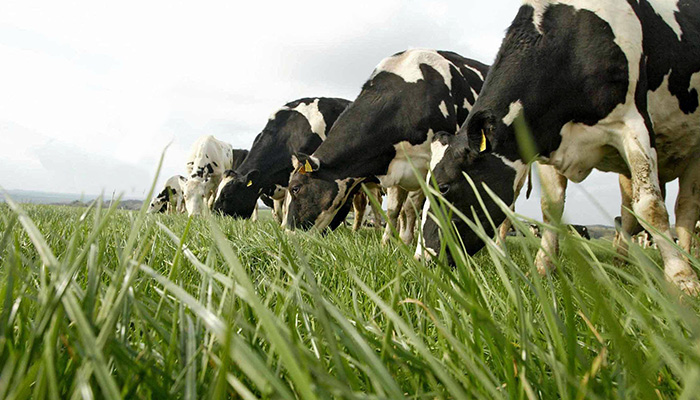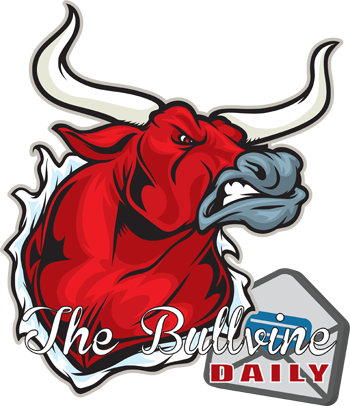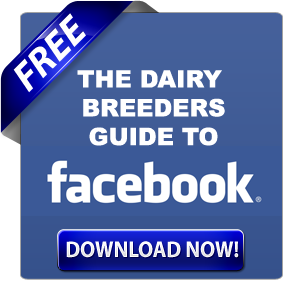€185,000 gap between Irish farms using smart grass measurement—that’s real money sitting in your paddocks right now.
EXECUTIVE SUMMARY: Look, I just dug into some fascinating data from Ireland that’s got me fired up. Weekly grass measurement paired with smart soil management is delivering €185,000 more profit annually for 200-cow operations — and that’s not a typo. We’re seeing northwest Irish farms hitting 68kg DM/ha/day while southeast operations struggle at 35kg. With feed costs up 30% since 2021, even small efficiency gains matter huge. University extensions and Teagasc research back this up — farms using digital measurement tools like PastureBase are beating traditional management by two tonnes DM/ha every year. The ROI math is simple: €15 monthly investment returning €181 per hectare annually. You’ve got to start measuring your grass weekly if you’re not already.
KEY TAKEAWAYS
- Boost grass utilization by 15-20% with weekly measurement protocols — start with a rising plate meter or digital tools, tracking covers and adjusting stocking rates between 2.5-3.0 cows/ha based on real-time growth data.
- Correct soil pH above 6.5 for instant productivity gains — Teagasc research shows this single move delivers 1.5 tonnes extra DM/ha in just six months, crucial as 2025 input costs stay elevated.
- Implement clover integration for biological nitrogen fixation — reliably supplies 70-100kg N/ha naturally, cutting chemical fertilizer costs by thousands while maintaining milk protein levels above 3.4%.
- Invest in infrastructure that pays back in 18 months — paddock access improvements boost utilization 15-20%, with water systems averaging €8,500 providing drought resilience that’s priceless given climate volatility.
- Track your data like your margins depend on it — because they do. Farms using digital grass management tools are seeing €181/ha annual benefits while traditional gut-feel operations leave serious money on the table.

The thing about grass growth in Ireland this year is the story it’s telling — one of two very different seasons playing out across the country, and each with serious implications for your bottom line.
Look up northwest and you’re seeing pastures pumping out around 68kg of dry matter per hectare per day, according to PastureBase Ireland. Down southeast, it’s half that — about 35kg DM/ha/day. This isn’t just a quirk of weather; this nearly double growth rate is putting tens of thousands of euros back into farms every year.
To really put numbers to it: If you run a 200-cow operation, this means daily feed costs could be off by €2.54 per cow, adding up to more than €185,000 a year, based on a full 365-day grazing season, from recent Teagasc insight.
What’s Behind This Geographic Lottery
So, what’s driving this divide? Met Éireann’s latest data sheds light on steady soil temperatures around 14–16°C, which, along with reliable rain, feed the grass pulse in the northwest. However, irregular rainfall and more variable soil temperatures hinder the southeast’s growth.
But here’s the thing: weather is only part of the pattern. The real difference is in how farms handle their grass. Top-tier operations are regularly hitting 15.2 tonnes of dry matter per hectare annually — again, Teagasc’s data makes that clear, which is a target well within reach for over half of Irish producers willing to tighten their management.
“Farms that really maximize grass utilization are seeing their infrastructure investments pay back within 18 months on average, with returns exceeding 35% a year.”
— Dr. Michael O’Donovan, Teagasc
That’s not just grass growing — it’s serious capital unlocked by smart management.
The Management Playbook That’s Working
What strikes me about the smarter management approaches is how they’re not rocket science, just disciplined execution:
Stocking rates that adapt weekly, typically ranging from 2.5 to 3 cows per hectare, rather than a one-size-fits-all approach. Strategic removal of surplus grass once swards hit around 1,700kg DM/ha, locking value in by baling at market prices near €46 per bale. There’s also widespread adoption of strip-wire grazing systems, which balance upfront costs against improved grazing efficiency, often paying for themselves within two seasons.
Southeastern farms are making their own moves, focusing on expanding their water infrastructures and embracing clover for its magic trick — biological nitrogen fixation, which, as recent Teagasc studies show, reliably supplies 70 to 100 kg N/ha naturally, slashing chemical fertilizer needs.
The Digital Edge That’s Changing Everything
And speaking of tech, I’ve been hearing from our friends over at Teagasc’s tech division about farmers who are riding the digital wave with PastureBase Ireland, gaining an extra two tonnes DM/ha annually because their decisions are data-driven, not guesswork.
For just about €15 a month on these tools, the returns can run upwards of €181 per hectare per year — even on small farms, that’s no small change.
What excites me is the potential coming from innovations like Origin Digital’s GrassMax, which promises to save grassland farmers over €1,600 annually by reducing the time spent chasing numbers in the field.
The Regulatory Reality Check
Meanwhile, the regulatory axe is swinging. That nitrogen derogation drop from 250kg to 220kg per hectare, impacting roughly 3,000 farms, nudges more producers into clover and efficient nitrogen management, turning a regulatory pain into a competitive edge.
Another key pressure point is input cost inflation, which has increased by roughly 30% since 2021 and shows no signs of letting up. For those clinging to legacy models, this spike is a wake-up call.
As dairy strategist David Kennedy recently said, “Maintaining a 95% grass diet when costs are soaring is a delicate balancing act. Those ignoring optimization risks will get left behind.”
What This Means for Your Operation Right Now
So, what does this mean for your farm? First, stop thinking measurement is optional. If you aren’t measuring grass weekly, you’re leaving tonnage on the table. For instance, Teagasc research shows that simply correcting soil pH to above 6.5 can net an extra 1.5 tonnes DM/ha in a single season.
If you’re in northern or western parts of the country, your growing season is a gift — push stocking rates, capitalize on wider rotations, and keep a hawk’s eye on grass availability.
If you’re located in the southeast, the focus shifts to efficiency, including water management, clover seeding, and strategic supplementation during periods of tightness to maintain high milk solids.
Investments are never cheap, I know. However, good paddock access can boost grass utilization by 15-20%, and the water systems that maintain production during drought tend to pay for themselves over a few seasons, averaging around €8,500 per installation.
The Bigger Picture
This isn’t just a blip or seasonal trend. It’s a structural realignment reshaping the profitability landscape of Irish dairy, even as broader European competitors grapple with shrinking herds and stricter environmental regulations.
Here’s the risk: legacy approaches won’t work anymore. Your input costs have increased by about 30% in the past four years, and the regulatory pressure is intensifying.
But for those willing to embrace change, who base decisions on real-time data, who keep their paddocks lean and soils fertile — that’s where the true competitive edge lies.
The Bottom Line
For Northwest Farms: Maximize Your Natural Advantage. Push those 300+ day growing seasons hard with tight rotations and strategic surplus management.
For Southeast Operations: Focus on efficiency multipliers — water infrastructure, clover integration, and precision supplementation to maintain milk protein above 3.4%.
For All Producers: Weekly grass measurement is no longer optional. The €181/ha annual benefit from better decision-making pays for itself many times over.
Investment Priority: Infrastructure that improves access and utilization. These aren’t costs — they’re competitive advantages that compound year after year.
What’s your grass data telling you? And more importantly, what story are you running this season?
Because in this business, the farms that write their own story instead of letting market conditions dictate it… Those are the ones that remain standing when everything settles.
Bottom line? Your grass is either making you money or costing you money. There’s no middle ground anymore. Time to get measuring.
Complete references and supporting documentation are available upon request by contacting the editorial team at editor@thebullvine.com.
Learn More:
- Unlock Hidden Dairy Profits Through Lifetime Efficiency: How Modern Genetics and Strategic Nutrition Can Cut Feed Costs by $251 Per Cow – Demonstrates practical strategies for maximizing feed conversion efficiency through genomic selection and precision nutrition, delivering measurable cost reductions that complement grass-based feeding systems for total farm profitability optimization.
- Genetic Correlations Upended: Why Sticking with Old Breeding Indices Could Cost Your Dairy $486 Per Cow and What the Data Really Proves – Reveals strategic breeding approaches using updated genetic evaluations that align with component-focused markets, providing long-term competitive advantages for grass-based operations targeting premium milk quality and sustainable production systems.
- The Digital Dairy Revolution: How IoT and Analytics Are Transforming Farms in 2025 – Explores cutting-edge precision agriculture technologies including automated monitoring and data analytics that enhance grass management decision-making, delivering 15-20% productivity improvements through real-time optimization of grazing and feeding strategies.
 Join the Revolution!
Join the Revolution!
Join over 30,000 successful dairy professionals who rely on Bullvine Weekly for their competitive edge. Delivered directly to your inbox each week, our exclusive industry insights help you make smarter decisions while saving precious hours every week. Never miss critical updates on milk production trends, breakthrough technologies, and profit-boosting strategies that top producers are already implementing. Subscribe now to transform your dairy operation’s efficiency and profitability—your future success is just one click away.










 Join the Revolution!
Join the Revolution!



